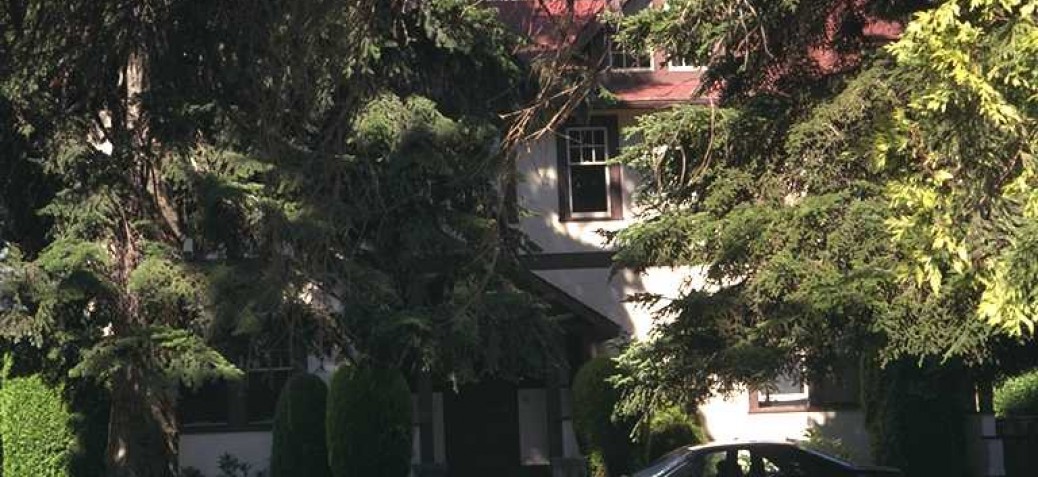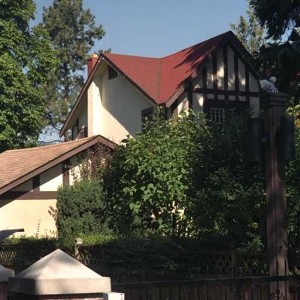G.B. Hamilton House
Place Description
The Hamilton House is a two-storey Arts and Crafts residence, with a modern addition on its lakefront elevation. It is located on the west side of Abbott Street on an Okanagan Lake waterfront lot in Kelowna's historic Abbott Street area. The property is well maintained, and includes a detached garage, manicured lawns, mature trees, large shrubs and foundation plantings.
Heritage Value
The Hamilton House is significant as a demonstration of the economic activity and wealth of Kelowna between the 1920s and 1930s at a time when fruit production became the driving economic engine of the area. It was built in 1931 for Andrew Walter Hamilton and his wife Grace. Andrew Hamilton (1880-1951) was in the fruit business as a shipper with Kelowna Farmers' Exchange, field manager for B.C. Growers Ltd., Secretary of B.C. Orchards Ltd. and, at the time the house was built, manager of Keloka Orchards. By 1948 the house was owned by David G. Stiell, a retired farmer, and from 1956-66 the house was owned by the Anglican Church, and was the residence of the Right Reverend Philip Roger Beattie, who became Anglican Bishop of Kootenay in 1955.
Additionally, this prominent home is valued as a restrained example of the Arts and Craft style. Displaying a regular roofline, regular and relatively symmetrical fenestration and following a simple plan, this Arts and Crafts influence is displayed primarily in the half-timbered and stucco cladding. The original house is a significant example of the work of local designer and contractor Robert Rowley (1862-1939). In 1962, an addition to the house was designed by local architect John Woodworth, who grew up in the Okanagan Valley and after training at the University of British Columbia established his practice in Kelowna, where he worked until his retirement. Woodworth's addition is designed in a modern idiom, but complements the original architecture of the house.
Character Defining Elements
Key elements that define the heritage character of Hamilton House include its:
- location, set deep on the property, close to the lake with views across the lake to the west shore;
- form, scale and massing as expressed by its two-storey height (with partial basement) and simple, irregular L-shaped plan;
- cross-gabled roof with gabled dormers and red hexagonal asphalt roof shingles;
- wood-frame construction and concrete foundation;
- Arts and Crafts details such as its stucco-clad exterior with half-timbering and exposed wooden pegs, exposed beams ends supporting a slight wall overhang, and plain, square, paired porch supports on the front facade;
- additional exterior details such as its red brick entrance steps, original glazed front door and sidelights with bevelled glass, open entrance porch on the street facade, enclosed side porch with shed roof (north elevation), and two red brick chimneys (one internal and one external);
- irregular fenestration: single, double and triple-assembly 6-over-1 and 8-over-1 double-hung wooden-sash windows, fixed 6-paned dormer windows;
- one storey flat roofed addition on lakefront elevation, with stucco cladding and multiple assembly fixed panes that wrap around the front corners; and
- associated landscape features such as the front elliptical driveway, mature maples and conifers.





